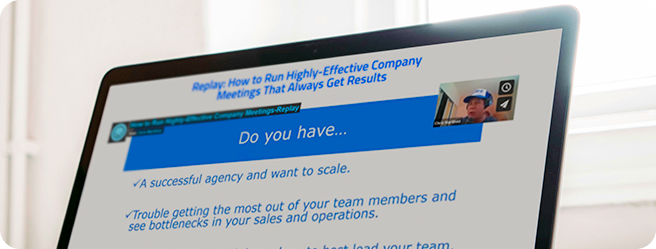Improving your agency’s bottom line is essential for long-term success and growth. By setting clear financial goals, implementing effective time-tracking systems, and adjusting your pricing strategies, you can significantly enhance your profitability. Here are some tips to help your agency improve its financial performance.
1. Set Clear Financial Goals
One of the most common mistakes marketing agencies make is failing to set clear financial goals. Without a specific target to aim for, it’s challenging to measure success or make informed decisions that drive profitability.
Why Financial Goals Matter
- Direction and Focus:
Financial goals provide direction and focus for your agency. By setting specific targets for sales, revenue, and profit, you create a roadmap for achieving financial success. - Accountability:
Goals help hold your team accountable for achieving desired outcomes. By establishing sales quotas and profit goals, you encourage team members to work collaboratively towards common objectives. - Motivation and Engagement:
Setting clear financial goals motivates your team to strive for excellence. When employees understand how their efforts contribute to the agency’s financial success, they are more engaged and committed to their roles.
How to Set Financial Goals
- Define Specific Targets:
Set specific, measurable, achievable, relevant, and time-bound (SMART) goals for sales, revenue, and profit. These targets should align with your agency’s strategic objectives and growth plans. - Involve Your Team:
Engage your team in the goal-setting process to ensure buy-in and commitment. Encourage collaboration and input from all departments to create realistic and attainable goals. - Monitor Progress:
Regularly track progress towards your financial goals and make adjustments as needed. Use financial reports and analytics to assess performance and identify areas for improvement.
2. Implement Time Tracking
Time tracking is a critical component of managing your agency’s production labor and ensuring profitability. By accurately tracking time, you can gauge how much money you’re making from each product and client.
Benefits of Time Tracking
- Cost Management:
Time tracking allows you to monitor production costs and assess the profitability of each project. This information helps you make informed decisions about pricing, resource allocation, and process improvements. - Resource Optimization:
By understanding how time is spent on different tasks, you can optimize resource allocation and improve efficiency. This ensures that your team is working on high-value activities that contribute to the agency’s bottom line. - Client Billing:
Accurate time tracking ensures that you bill clients correctly for the work completed. This transparency builds trust and ensures that you are compensated fairly for your services.
How to Implement Time Tracking
- Choose a Time-Tracking Tool:
Select a reliable time-tracking tool that integrates with your existing project management systems. Ensure that the tool is user-friendly and provides detailed reports on time usage. - Train Your Team:
Provide training and support to ensure that all team members understand how to use the time-tracking tool effectively. Emphasize the importance of accurate time logging for financial management. - Review Reports Monthly:
Run time-tracking reports monthly to assess production costs and profitability. Use this data to identify areas for improvement and make informed decisions about pricing and resource allocation.
3. Raise Prices
Raising prices is a necessary step to ensure that your agency remains profitable, especially in the face of rising costs and inflation. By adjusting your pricing strategy, you can protect your bottom line and continue delivering high-quality services.
Why Raising Prices is Important
- Cover Rising Costs:
Inflation and increased operational costs can erode your profit margins. Raising prices helps cover these costs and ensures that your agency remains financially stable. - Reflect Value:
Adjusting prices allows you to reflect the true value of your services. By demonstrating the benefits and outcomes your agency delivers, you can justify price increases to clients. - Invest in Growth:
Higher prices provide additional revenue that can be reinvested in your agency’s growth. This includes hiring new talent, expanding service offerings, and enhancing technology and infrastructure.
How to Raise Prices
- Communicate Clearly:
Communicate price increases transparently to clients, explaining the reasons behind the change and the value they will continue to receive. This helps maintain trust and minimizes resistance. - Phase in Increases:
Consider phasing in price increases gradually to allow clients time to adjust. This approach helps ease the transition and ensures continued client satisfaction. - Review Competitor Pricing:
Analyze competitor pricing to ensure that your rates remain competitive. Use this information to position your agency as a provider of high-quality, value-driven services.
Conclusion
Improving your agency’s bottom line requires a strategic approach that focuses on setting clear financial goals, implementing effective time-tracking systems, and adjusting pricing strategies. By taking these steps, you can enhance profitability, drive growth, and ensure the long-term success of your agency. By focusing on these key areas, agency owners can build a financially strong organization that thrives in today’s competitive market.


